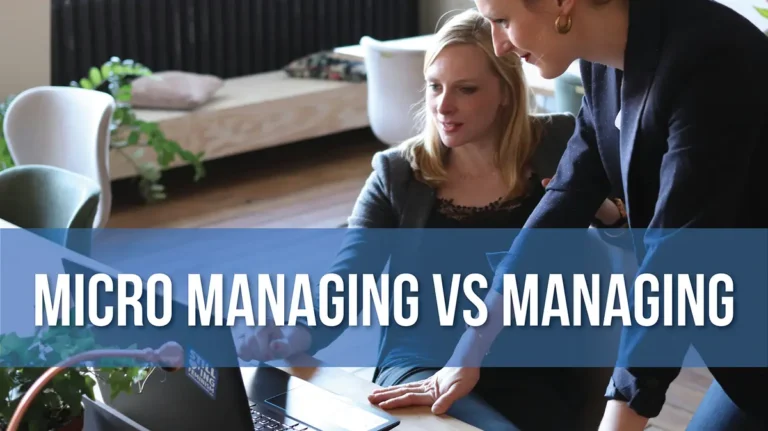6 Tips for Giving Great Feedback
Giving feedback can be tough, especially if it’s negative feedback. Avoiding feedback can have disastrous consequences though, to your relationships, your reputation, and your employee’s career.
There is often a disconnect in what employees think and what their managers think, which makes it important to give feedback honestly and often. Good feedback can boost confidence and motivation, while negative feedback (if given properly and constructively) can be an excellent teaching tool and ensure an employee is on the appropriate track for learning and development.
The most important component of giving feedback is summed up in one simple question: Is it constructive? If it’s not constructive, there’s no reason to give feedback. Constructive feedback may be positive or negative, but will always serve to help better that project or team member in some way. Maybe positive feedback boosts their confidence and encourages them to keep thinking outside of the box, or some negative feedback helps them understand and learn a new way of thinking. As long as feedback is constructive, you should give it.
It’s not always easy to give feedback though. These 6 tips can help get you started:
- Have a plan. It’s always good to have a plan before jumping into action, and giving feedback is no exception. Think about what you want to say and how you want to say it before approaching your employee. Think about how they may respond to your feedback, and have an idea of how you’ll handle their response.
This is especially important for giving negative feedback. You want to make sure your feedback comes across correctly, and is taken constructively. You also want to be prepared to respond appropriately if the employee doesn’t take your feedback well. - Know your audience. If it’s your job to give feedback, then it’s likely you know the employee receiving the feedback best. Take into account their individual personality and preferences when making your plan. If it’s positive feedback, but they don’t like to be the center of attention, tell them what a great job they did privately. If they thrive on public recognition, let them know in a group setting.
Giving negative feedback is usually best given privately, but that depends on the feedback and the individual’s personality. Your team members are unique, so giving feedback should be approached differently for each individual member. - Be extremely honest. It’s a disservice to the employee you’re giving feedback to if you aren’t honest. It can also be harmful to your employee-manager relationship if they realize you don’t always tell them the truth. Even when it’s hard to do, giving your honest feedback is the only way to preserve a good relationship and help your employee reach their full potential.
Being honest is different than being harsh. Even if your feedback is negative, find a way to package it with some positives and offer advice on what to do differently next time. - Ensure timeliness. When you have feedback to give, don’t wait around to give it. Feedback is most effective when the project or occurrence is still fresh for everyone. Negative feedback won’t be taken well if you allow your employee to believe they did an excellent job for two weeks before you approach them with a list of improvements that could have been made.
- Allow for two-way conversation. Feedback should always be a two-way street, even if you’re delivering the bulk of it. Regardless of the type of feedback you’re giving, it’s important to your employee’s growth and development (and their trust in you!) that they’re given the opportunity to provide feedback to you as well.
There is immense value in all feedback. Your employee may provide some insight into how you could approach the next project to better facilitate their success, or into a communication issue you didn’t realize was happening. Be open to receiving feedback in addition to giving it, and everyone will benefit. - Follow up – if necessary. Following up feedback isn’t always necessary, but be aware and follow through if it is. One employee may be just fine hearing, “great job!” after delivering their project, but a different employee may need to hear it a few times before it really sinks in.
Negative feedback often requires a different type of follow up. If you’ve provided actionable steps for improvement, follow up in a few days to see how those steps are going. If an employee reacts badly to receiving your feedback, circle back around later on to check in and see how they are doing. This also gives you a good opening to provide some positive feedback to help take the sting out of some of the negatives from earlier.
Providing constructive feedback is key to every team member’s success, even when it’s difficult. Take the time to get to know your employees on an individual level, so you can tailor and deliver any message in a way that they will appreciate and understand.








